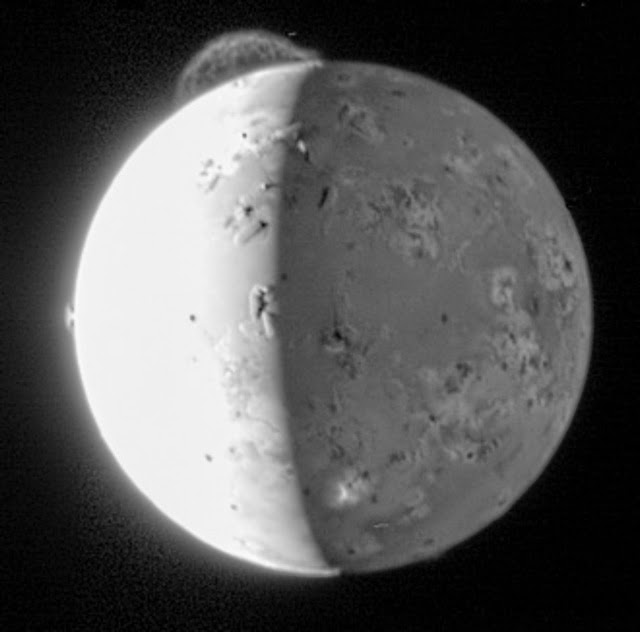Why haven’t we been to Pluto you ask? Well, actually we are en route right now. NASA launched New Horizons back on June 19th 2006 and already has done a fly-by of Jupiter in February of 2007 but in approximately July of 2015 we will get a view of Pluto. In March it was 3.74 AU from Pluto (and about 29 AU or 2.69385929 × 109 miles from Earth). Radio signals take four hours to travel to the spacecraft from Earth.
What does this mission hope to accomplish? It has many facets. In the first phase New Horizons flew almost immediately past New Horizons was originally planned as a voyage to what was the only unexplored planet in the Solar System. Mission Controllers hoping it would get to see an asteroid to photograph and glean some data from its scientific instruments onboard (the Alice ultraviolet imaging spectrometer, the PEPSSI plasma-sensor, and the LORRI long-range visible-spectrum camera) and beam the data back to us. Thankfully after Mission Control was able to work this out and so they got a view of ‘132524 APL’ an asteroid estimated to be 2.5 km (1.6 mi) in diameter. The asteroid's composition as well as light and phase curves was detailed, unfortunately due to the proximity of the Sun they were unable to utilize the LORRI. But there’s more….
Next New Horizons took NASA to Jupiter and gave some impressive photo’s (the one below is through infrared camera). She checked out the Jovian moons – from Io & Europa to Ganymede & Callisto as well as Minor moons such as Amalthea who had
their orbit solutions refined. On most through infrared signatures additional volcanos were detected. There were eleven observed eruptions and it was found that the volcano Tvashtar rose up to an altitude of 330 kilometers.
New Horizons next missions was to sleep. Hibernate and save her energy for Pluto. Along the way NH crossed the orbit of Saturn and then Uranus. Scientific data was collected…and next? New Horizons is intended to fly within 10,000 km/6,200 miles of Pluto in 2015. She will come as close as 27,000 km/17,000 miles to Charon. AND THEN?
Then there is the Kuiper-belt mission. Once NH has passed Pluto, she will take on the Kuiper belt. Mission Control is even now searching for possible objects in the belt she can explore. Because she has limited maneuverability it has to be planned far in advance.
But still it is anticipated that Pluto & her moon Charon will provide lots of data. Below are the actual objectives for the Pluto phase of the mission:
· Primary objectives (required)
• Characterize the global geology and morphology of Pluto and Charon
• Map chemical compositions of Pluto and Charon surfaces
• Characterize the neutral (non-ionized) atmosphere of Pluto and its escape rate
· Loss of any of these objectives will constitute a failure of the mission.
· Secondary objectives (expected)
• Characterize the time variability of Pluto's surface and atmosphere
• Image select Pluto and Charon areas in stereo
• Map the terminators (day/night border) of Pluto and Charon with high resolution
• Map the chemical compositions of select Pluto and Charon areas with high resolution
• Characterize Pluto's ionosphere (upper layer of the atmosphere), and its interaction with the solar wind
• Search for neutral species such as H2, hydrocarbons, HCN and other nitriles in the atmosphere
• Search for any Charon atmosphere
• Determine bolometric Bond albedos for Pluto and Charon
• Map surface temperatures of Pluto and Charon
• Map any additional surfaces of outer most moons; Nix, Hydra, Keberos & Styx.
· It is expected, but not demanded, that most of these objectives will be met.
· Tertiary objectives (desired)
• Characterize the energetic particle
So see folks we are going to check Pluto out it just takes a really long time. But lucky for all concerned, we are about to get our chance!
I can hardly wait!






No comments:
Post a Comment